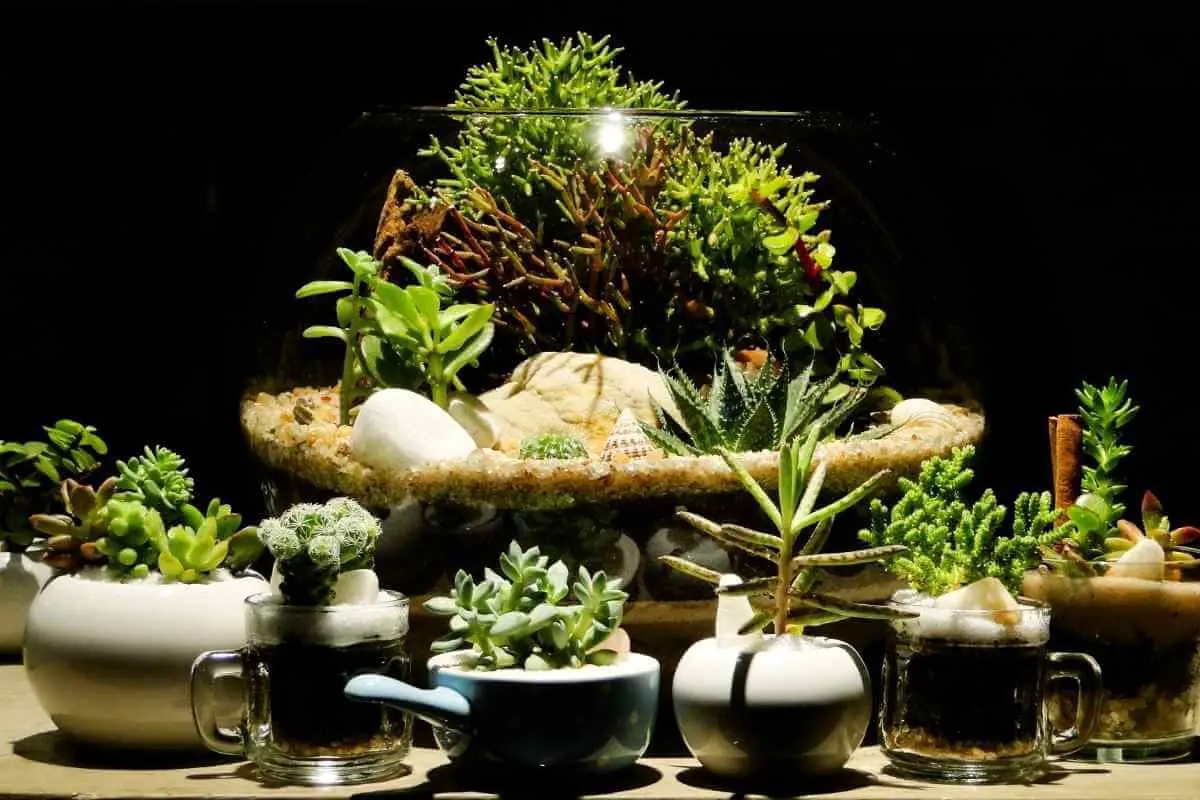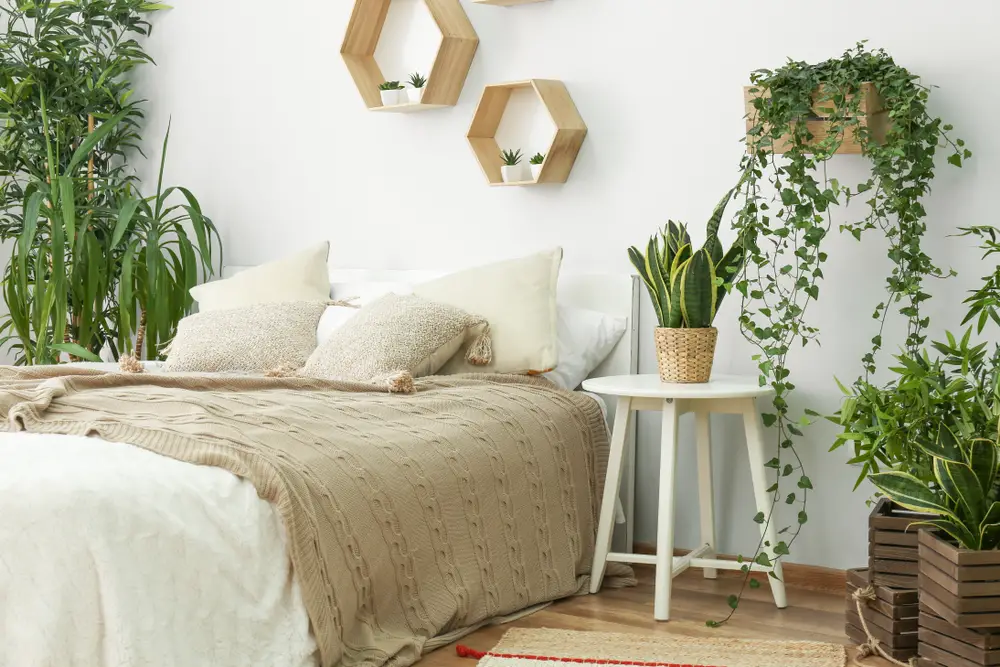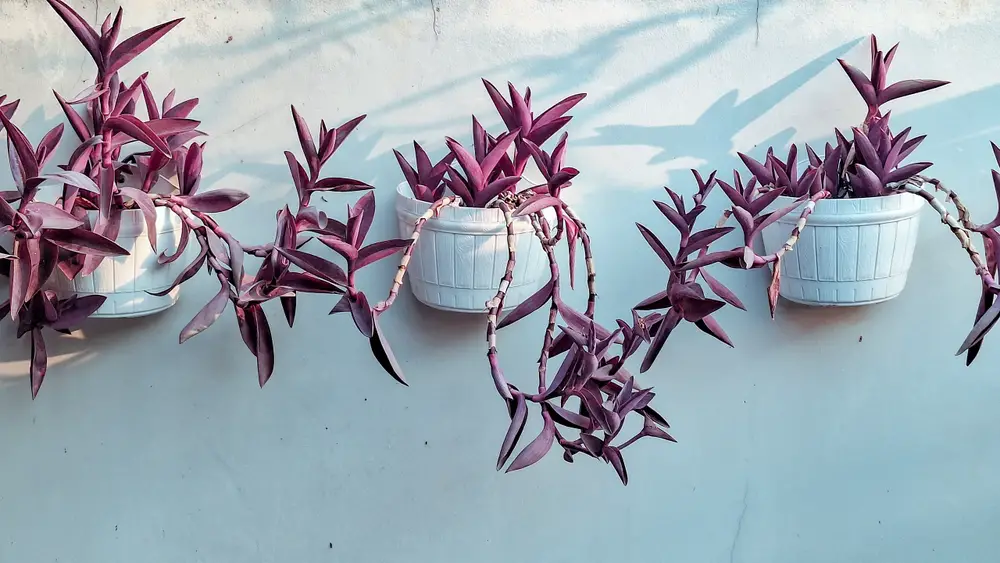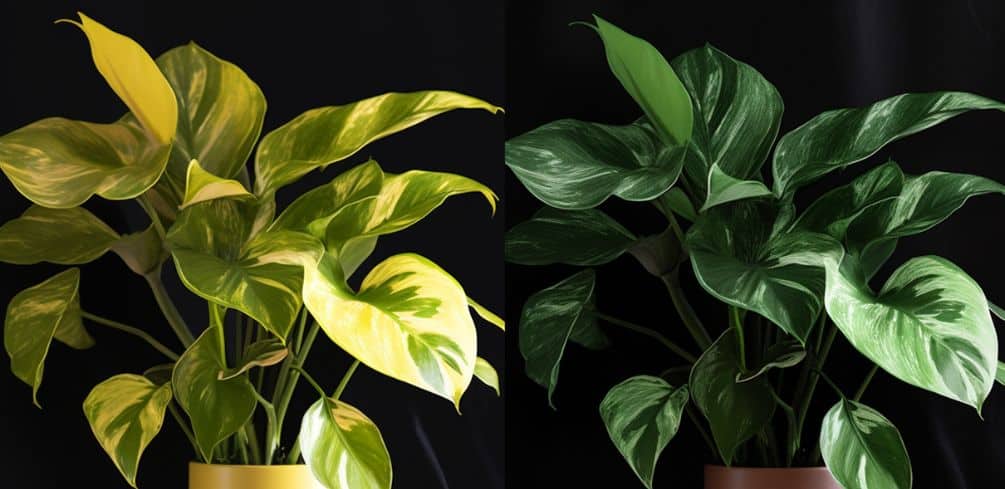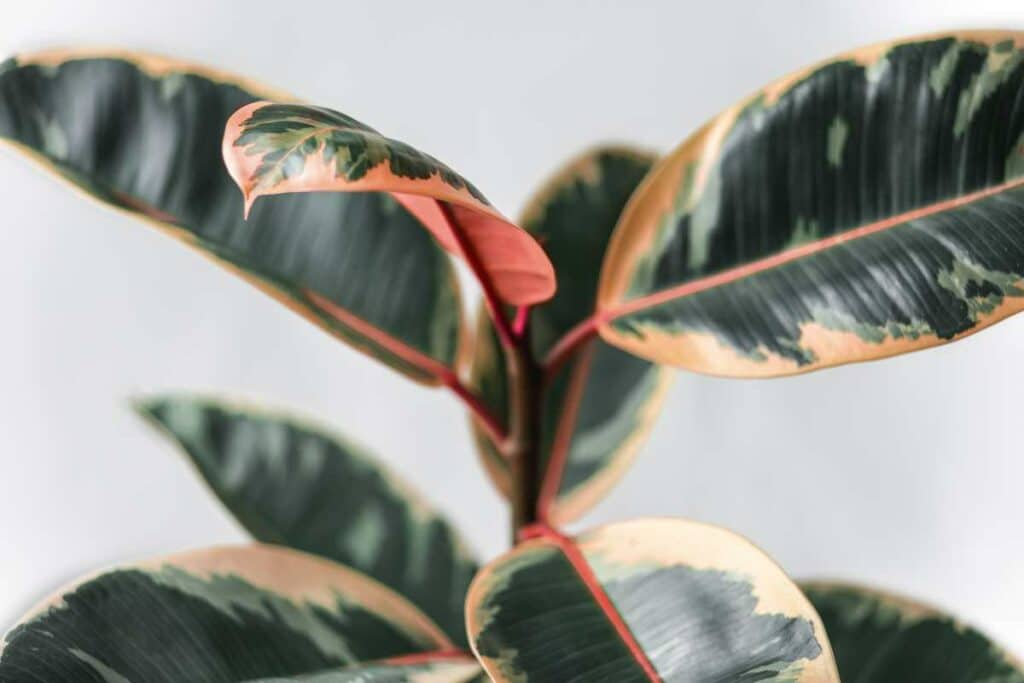Moss has no natural root system and no water vessels; therefore quickly grows on any surface if the conditions best suit its growth, such as wet and humid areas.
It only requires moisture, enough light, and a growth medium with enough nutrients.
Moss grows in surfaces such as terrarium glass walls, roofs, paths, and soil surfaces with salty areas as an exception.
The preferable way to clean your Moss is to saturate the entire surface by spraying it with water and scraping the Moss or using white vinegar solution. When doing this, you should be careful not to damage healthy plants.
Steps of Killing Moss in a Terrarium
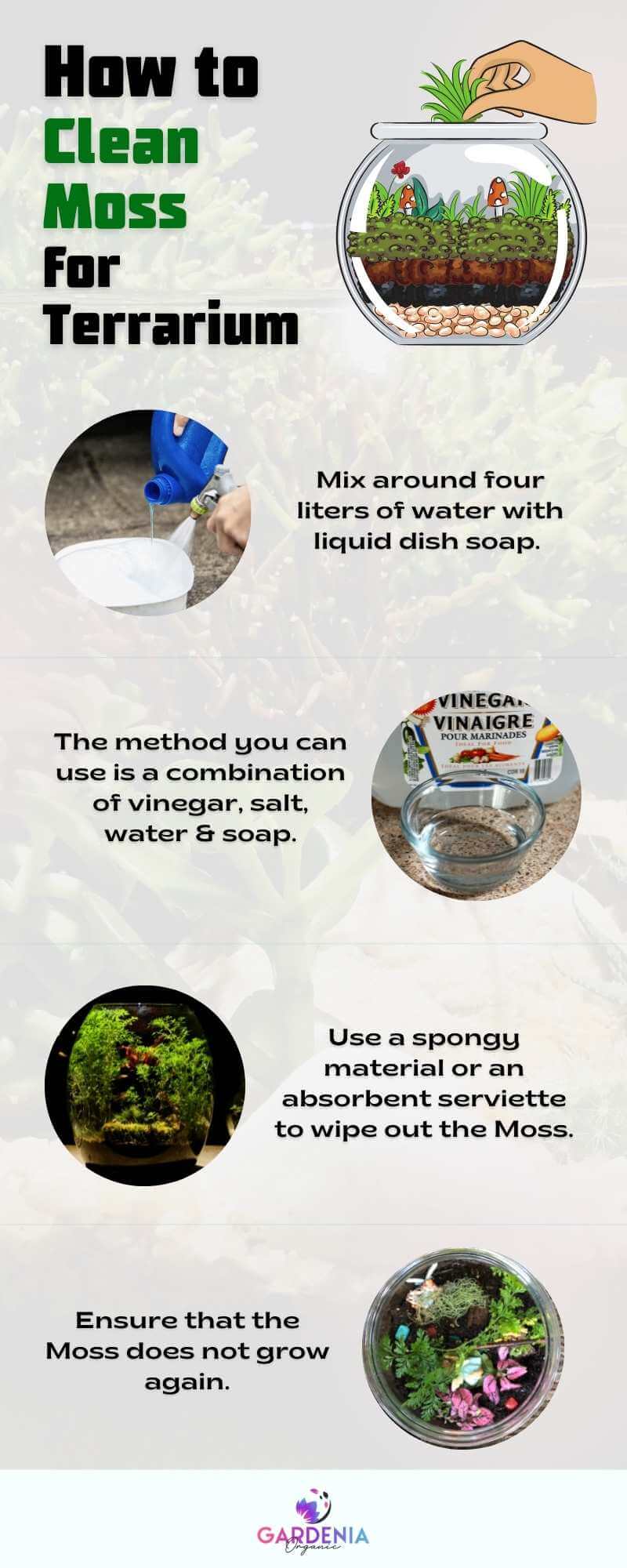
Using Dish Soap or Detergents
Mix around four liters of water with liquid dish soap.
Use a bottle with holes drilled at the lid or spraying can, point the nozzle to the targeted area, spray the Moss with the mixture avoiding the plants as they will also die from the solution.
Apply the solution when the plants are moist.
After 24 hours, the Moss will turn brown and finally die. Uproot the left out Moss since the solution might not dry up the rhizoids.
Final Step: Scrub the Moss and place it away from the plant or soil to prevent it from germinating again.
Using Vinegar
- The use of vinegar is highly advisable since it is more natural and gentle than processed chemicals.
- Fill a plastic sprayer halfway with white or apple cider vinegar. Do not attempt to dissolve the vinegar with water.
- Spray the vinegar carefully on the moss growth. Avoid spraying on the healthy plants in the terrarium. Soak the Moss until it is completely saturated and wait for about 10 minutes for the vinegar to kill the plant.
- Brush or scrub away the Moss with a sponge or a brush and rinse it off with water.
Another method you can use is a combination of vinegar, salt, water, and soap.
Make a mixture of the four ingredients by adding:
- one tablespoon of vinegar
- 5 liters of water
- a quarter percentage of the whole mixture of soap
- and half a kilogram of salt
Always Remember: The use of vinegar is risky since it can kill other plants in a terrarium.
Physical Removal of Moss in a Terrarium
Moisten the moss patches in the terrarium to reduce airborne spores during its scraping.
Moss doesn’t have a root system; therefore, it is very easy to scrape the Moss off from the terrarium surface or soil without damaging other plants in the container.
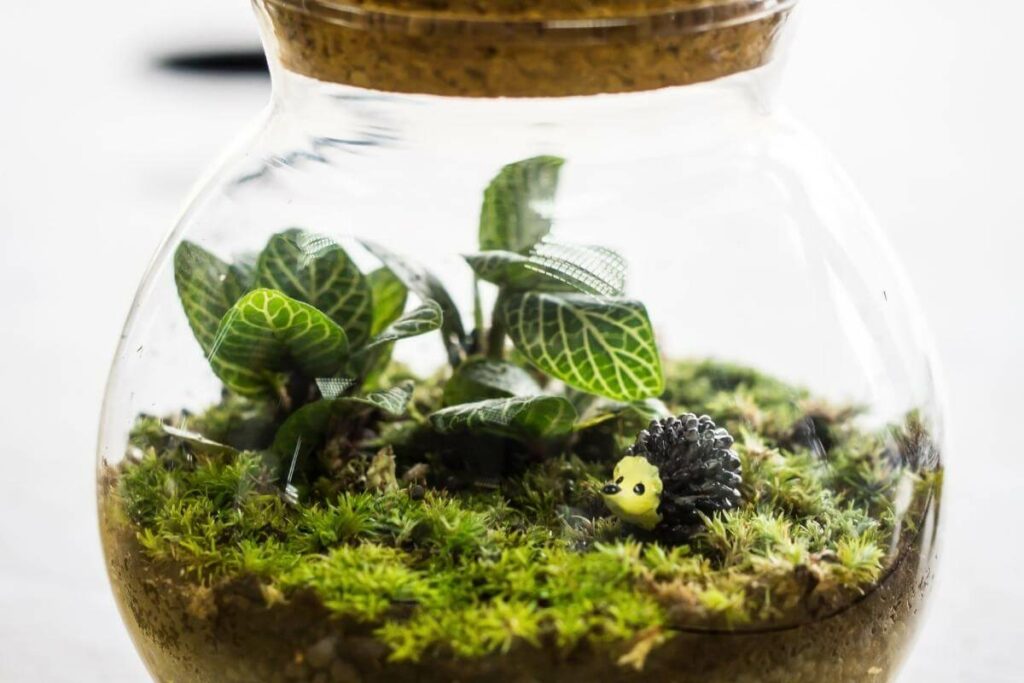
Use a spongy material or an absorbent serviette to wipe out the Moss.
Leave the container for air circulation and drying up before watering the plants again.
From Experience: The chances of Moss to crop out again over time are high; thus, this method is temporary and not permanent. This method is advised if one wants to keep the acidic soil for other plants.
What If Moss Growth Is Severe?
Remove the plants with caution and all the items in the terrarium.
Disinfect the terrarium with hot water and a disinfectant such as dish soap and wash any other items in the container.
Change the soil and discard any parts of the plant (leaves, stem, roots, or even the whole plant) that were affected.
How to Ensure the Moss Does Not Grow Again
To ensure that the Moss does not grow again, ensure there is air in the terrarium twice every month before watering the plants:
- Airing avoids staling water which accelerates the growth of the Moss.
- Provide drainage for the terrarium to remove excess water.
- Use of charcoal layer to soak impurities and fight fungi.
- Avoid overwatering the terrarium, and if so, ensure there is air circulation. Ensure the walls don’t have water droplets for long, which would lead to the growth of Moss. You can dry out the water with an absorbent material such as a towel.
- Open closed terrariums weekly for one day.
- Replace the overused soil. You can warm the soil to sterilize it.
Disadvantages of Cleaning Moss in a Terrarium
Moss is an ideal component for terrariums because it requires little soil, low light, and dampness instead of a lot of water.
To keep Moss alive, one needs to ensure there is light once a week, water the plant twice a week using a spray gun, and avoid direct sunlight to avoid drying out the plant.
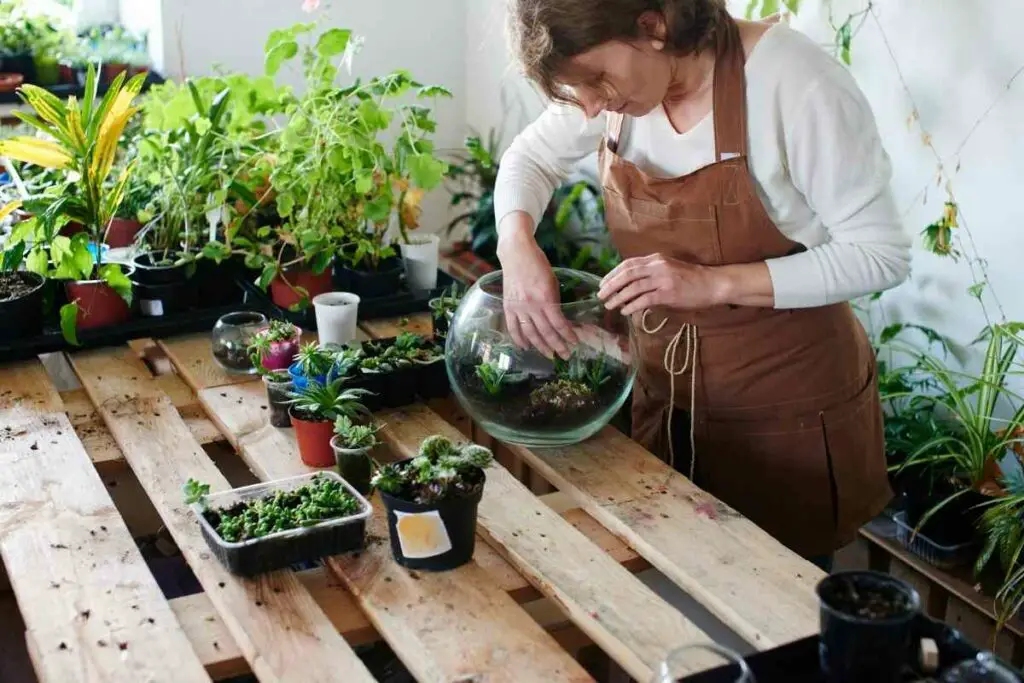
Moss would probably die if one overwaters the plant or soil, placing terrarium in wrong spots, i.e., dark places with insufficient light, use of wrong pots or containers for terrariums, and use of wrong requirements to the plants.
| Advantages | Disadvantages |
|---|---|
| Moss adds a decorative texture to your terrarium. | Creates an annoying look when unwanted. |
| It gives an attractive color to the container. To maintain the good color, moist the Moss often and spray it twice using a spray gun. | Makes the surface look uneven. |
| It covers the soil layer, which gives it a natural greenwood appearance. | Moss can cause damage to the terrarium walls. |
| Rhizoids (roots hairs) aid the plants in maintaining their shapes. | |
| Absorb water and retain nutrients in their bodies. | |
| Keeps the soil moist by soaking up water hence keeping the conditions humid? | |
| It prevents erosion when watering plants in the terrarium. |
Final Thoughts
Moss is a small flowerless plant with no root system that grows on most damp surfaces.
Even though they are not harmful to plants in a terrarium, some people might find them unattractive and want to get rid of them.
There are different methods of cleaning Moss for a terrarium, such as using homemade remedies such as vinegar, salt solution, and soap, using physical means such as scrubbing off, and purchasing made moss killers.
Also Helpful
- Philodendron Care, Varieties, And Aesthetic Home Arrangements
- Best House Plants for Low Light – Thriving Indoors with Minimal Sunlight
- 15 Air-Purifying Houseplants That Release The Most Oxygen
- Purple Houseplants: Your Guide to Dramatic Indoor Beauty
- Philodendron Moonlight Vs. Golden Goddess
- How to Revive Your Rubber Plant: 6 Tips to Help Your Rubber Tree Thrive Again
